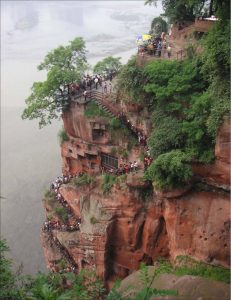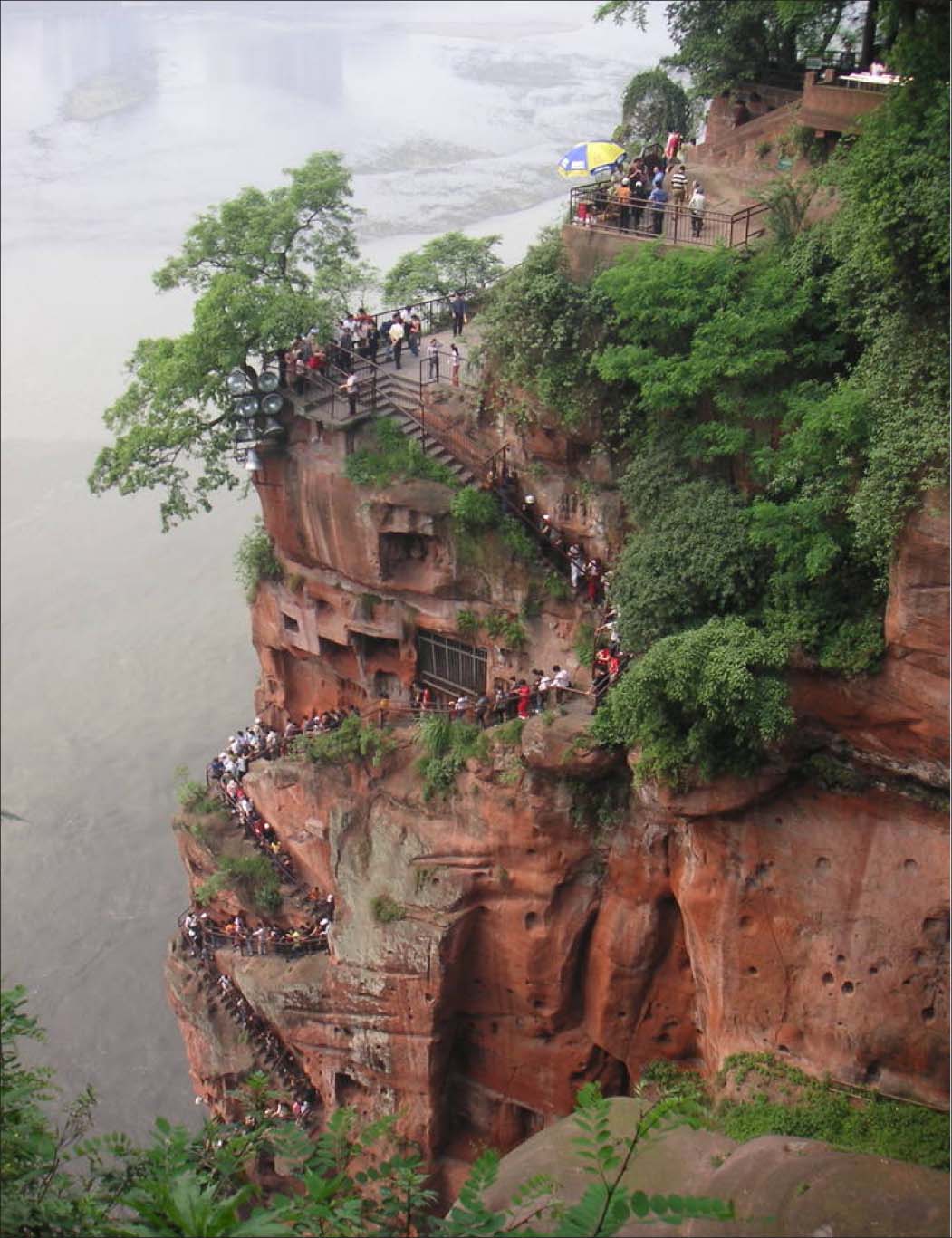
Mt. Emei is one of the four sacred Buddhist mountains of China (中國佛教四大名山). At 3,099 meters, it is the highest of these sacred mountains, which include Putuo (普陀山 284 meters) in Zhejiang province, Jiuhua (九華山 1,341 meters) in Anhui and Wutai (五台山 3,058) in Shanxi.
Mt. Emei is traditionally regarded as the place of enlightenment of the Bodhisattva Samantabhadra, known to the Chinese as Puxian (普賢).
The mountain is where the first Buddhist temple in China was built in the first century AD, and over 70 Buddhist monasteries were built during the Ming and Qing dynasties, most of them located near the top of the mountain, maximizing the natural scenery and unique topography of the area.
Currently, visitors can trek up the mountain – a strenuous walk of nearly two hours up rather steep steps – or take the cable car. Each morning, many Buddhist monks can be seen climbing the mountain.
While the mountain offers fantastic views at different levels, one must reach what is called the Golden Summit at 3,079 meters above sea level – described as an “extravagance of natural wonders and Buddhist spiritualism.”
At the summit of Mt. Emei can be found the golden statue of Puxian, weighing 660 tons and standing 48 meters high. Its most distinct feature is the head which faces 10 directions, one for each of the Bodhisattva’s “Ten Truths of Universal Worthiness” and also symbolizes the 10 directions of Buddhism (east, west, north, south, northeast, northwest, southeast, southwest, up and down).
Puxian is said to have meditated on Mt. Emei, and is thus considered the protector of the area. Behind the statue can be found the Golden Summit Temple, and on any given day devotees can be seen offering prayers and incense at both sites.
The Golden Summit is celebrated for its four “classic scenes” – the sea of clouds, the sunrise, the Buddha Light and the saint lamps.
Only a few very hardy souls who manage the trek up before dawn will have the singular privilege of watching the sun rise over the sea of clouds, an unforgettable and mesmerizing sight that starts with the darkness slowly being tinged with rosy hues, then a bright arc that is the sun oh-so-slowly emerging through the blanket of clouds.
The Buddha Light is a phenomenon that occurs only a few times a year, when your shadow is cast before you in the mist and glowing lights encircle you as if you have attained enlightenment.
On moonless nights, groups of floating green lights can be seen. This still mysterious occurrence is referred to as the “saint lamps.”
For those concerned with less spiritual dimensions, Mt. Emei has many attractions.
As a scenic area, the mountain offers inspiring natural beauty, with tall ancient trees, thundering waterfalls and pristine brooks.
It is also a very rich biodiversity area, with over 200 plant species of various families found here.
The mountain is also home to dozens of overly “friendly” Tibetan macaques who will gladly take food – whether you offer it or not – from visitors.
Mt. Emei is also known as a natural “oxygen bar,” with negative oxygen ions in the air up to 1,000 times more than in the urban areas.
Scientific studies have shown that adequate negative oxygen ions in the air can stimulate metabolism of the human body to improve sleep, curb exhaustion and enhance lifespan.
Whether you’re a devoted pilgrim or an adventurous tourist, Mt. Emei is a destination worth visiting – and conquering – at least once in your life.
Categories
Mt. Emei
